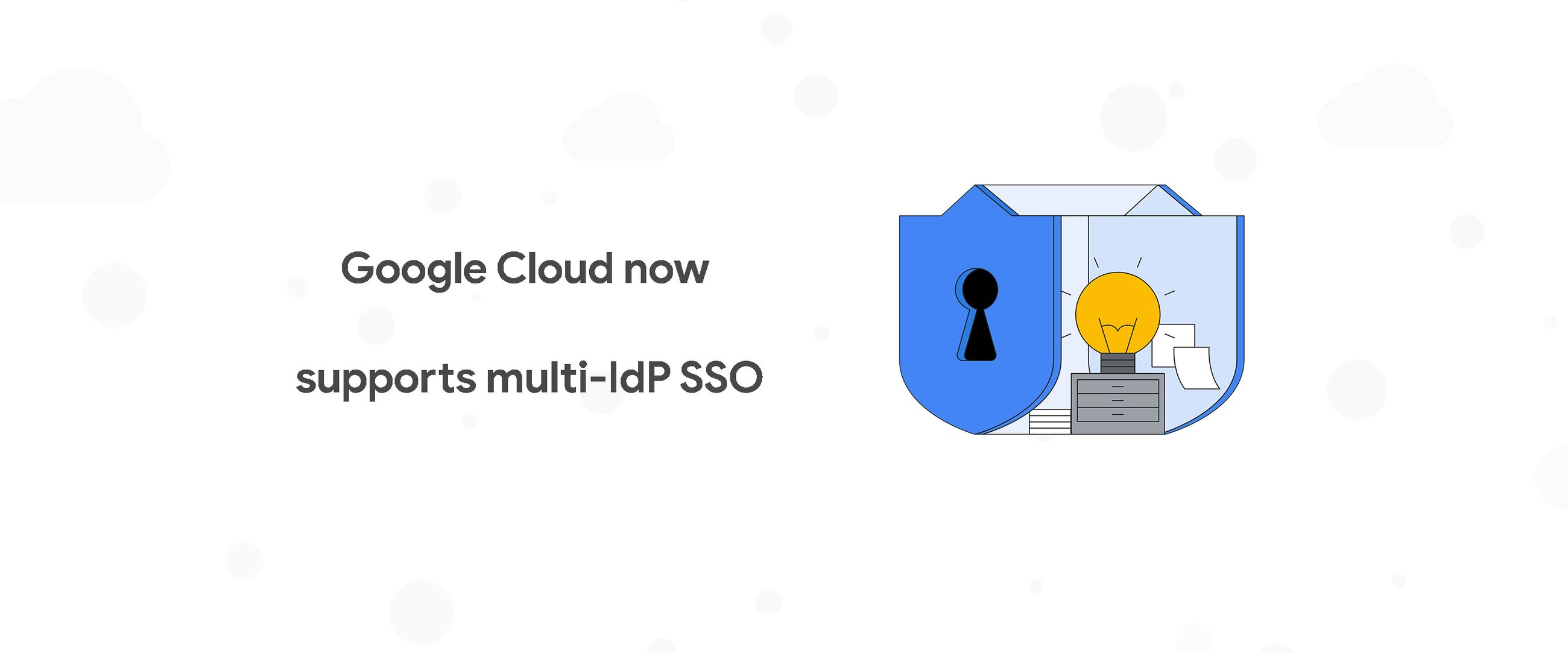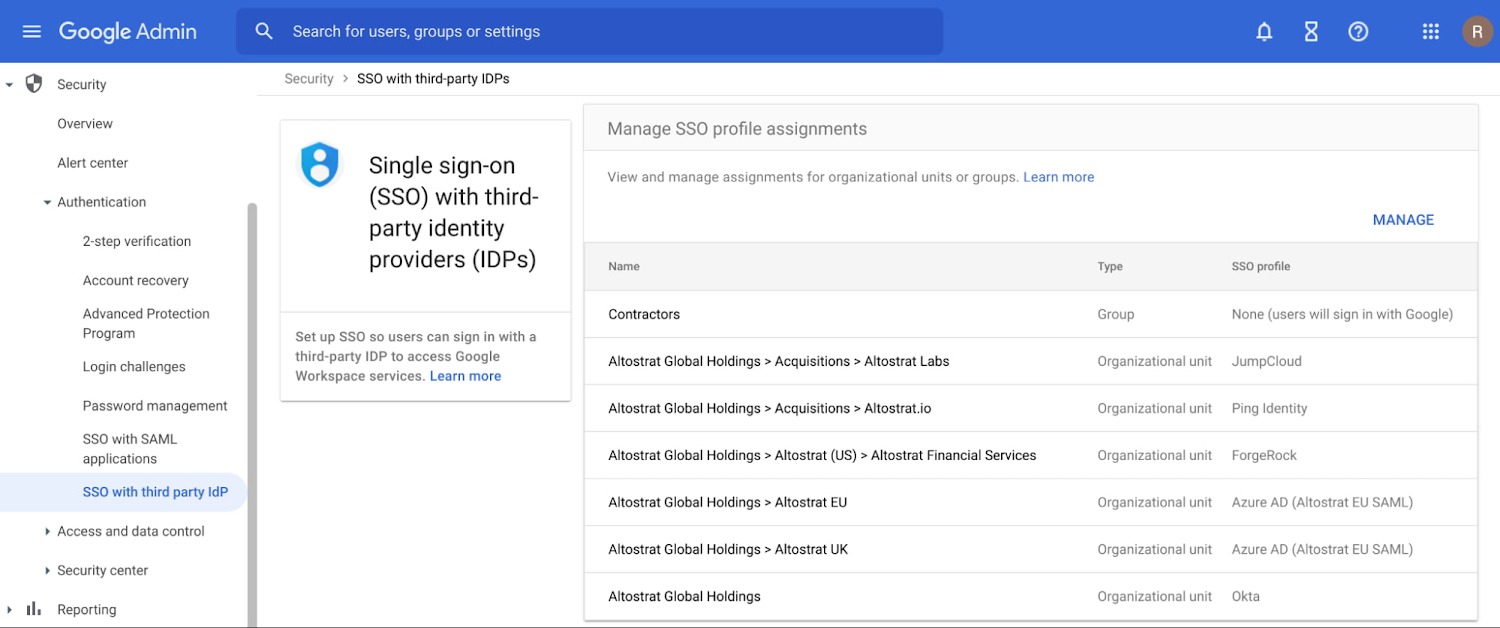Introducing Google Cloud and Google Workspace support for multiple Identity providers with Single Sign-On

Matthew Soldo
Product Manager, Google Workspace Identity
Google is one of the largest identity providers on the Internet. Users rely on our identity systems to log into Google’s own offerings, as well as third-party apps and services. For our business customers, we provide administratively managed Google accounts that can be used to access Google Workspace, Google Cloud, and BeyondCorp Enterprise. Today we’re announcing that these organizational accounts support single sign-on (SSO) from multiple third-party identity providers (IdPs), available in general availability immediately. This allows customers to more easily access Google’s services using their existing identity systems.
Google has long provided customers with a choice of digital identity providers. For over a decade, we have supported SSO via the SAML protocol. Currently, Google Cloud customers can enable a single identity provider for their users with the SAML 2.0 protocol. This release significantly enhances our SSO capabilities by supporting multiple SAML-based identity providers instead of just one.
Business cases for supporting multiple identity providers
There are many reasons for customers to federate identity to multiple third-party identity providers. Often, organizations have multiple identity providers resulting from mergers and acquisitions, or due to differing IT strategies across corporate divisions and subsidiaries. Supporting multiple identity providers allows the users from these different organizations to all use Google Cloud without time-consuming and costly migrations.
Another increasingly common use case is data sovereignty. Companies that need to store the data of their employees in specific jurisdictional locations may need to use different identity providers.
Migrations are yet another common use case for supporting multiple identity providers. Organizations transitioning to new identity providers can now keep their old system active with the new one during the transition phase.
"The City of Los Angeles is launching a unified directory containing all of the city’s workforce. Known as “One Digital City,” the directory provides L.A. city systems with better security and a single source for authentication, authorization, and directory information,” said Nima Asgari, Google Team Manager for the City of Los Angeles. “As the second largest city in the United States, this directory comes at a critical time for hybrid teleworkers, allowing a standard collaboration platform based on Google Docs, Sheets, Slides, Forms, and Sites. From our experience, Google Cloud's support of multiple identity providers has saved us from having to create a number of custom solutions that would require valuable staff time and infrastructure costs.”
How it works
To use these new identity federation capabilities, Google Cloud Administrators must first configure one or more identity provider profiles in the Google Cloud Admin console; we support up to 100 profiles. These profiles require information from your identity provider, including a sign-in URL and an X.509 certificate. Once these profiles have been created, they can then be assigned to the root level for your organization or to any organizational unit (OU). In addition, profiles can be assigned to a Group as an override for the OU. It is also possible to configure an Organizational Unit or group to sign in with Google usernames and passwords instead of a third-party IdP.


For detailed information on configuring SSO with third-party IdPs, see the documentation here.
OIDC Support, Coming Soon
Currently, SSO supports the popular SAML 2.0 protocol. Later this year, we plan on adding support for OIDC. OIDC is becoming increasingly popular for both consumer and corporate SSO. By supporting OIDC, Google Cloud customers can choose which protocol is best for the needs of their organization. OIDC works alongside the multi-IdP support being released now, so administrators can configure IdPs using both SAML and OIDC.


